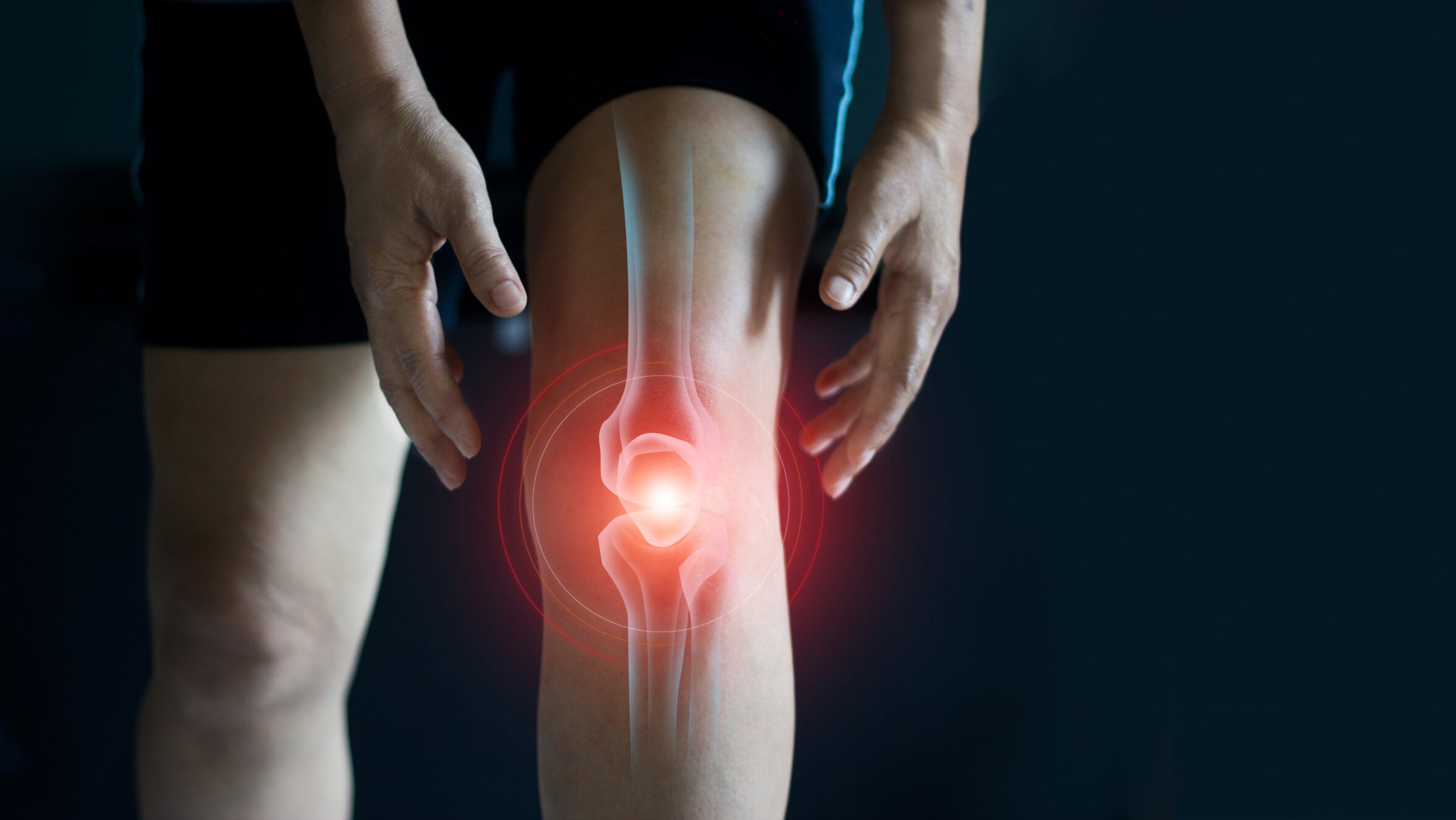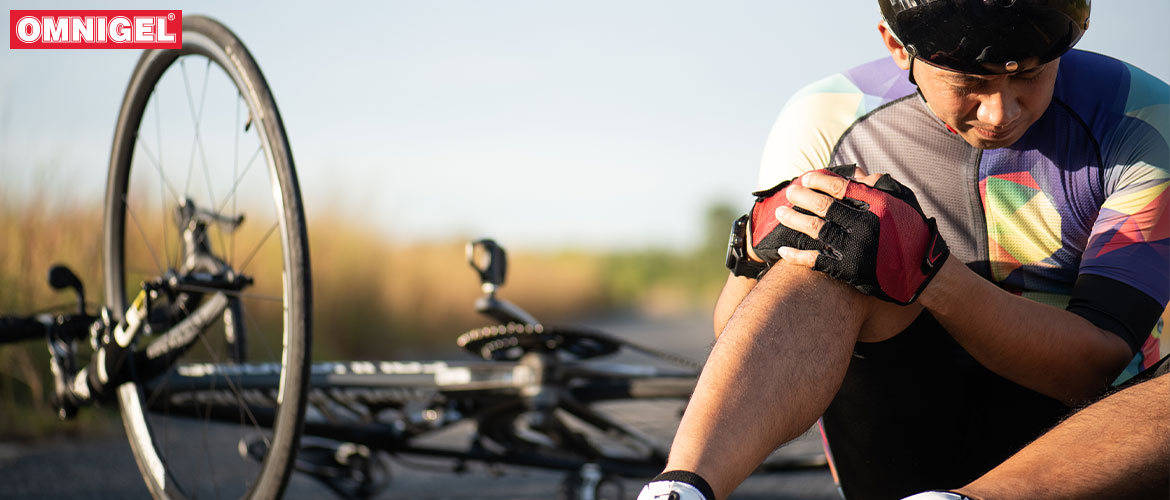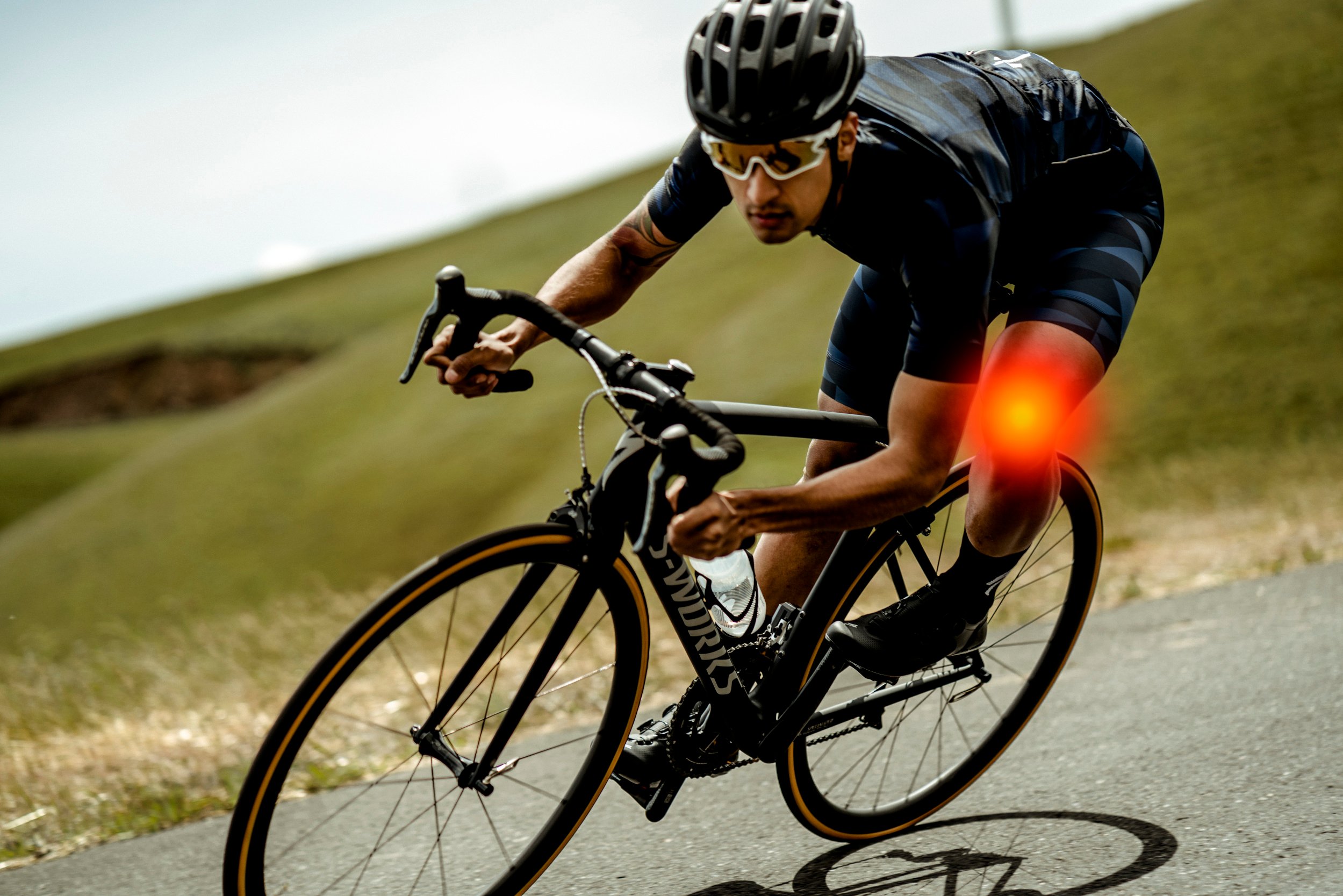What Causes Pain on the Outside of the Knee While Cycling?
Cycling is a low-impact sport, but it’s not immune to injuries. One common complaint among cyclists is pain on the outside of the knee, also known as lateral knee pain. This type of pain can be debilitating and frustrating, especially if it’s severe enough to affect performance. So, what causes pain on the outside of the knee while cycling?
Improper bike fit is a leading cause of outside knee pain from cycling. When the saddle height, handlebar height, and pedal alignment are not tailored to a cyclist’s body, it can put unnecessary stress on the knee joint, leading to pain and discomfort. For example, a saddle that’s too high or too low can cause the knee to bend at an unnatural angle, putting pressure on the outside of the knee.
Overuse is another common cause of outside knee pain from cycling. Cyclists who suddenly increase their mileage or intensity can put excessive stress on the knee joint, leading to pain and inflammation. This is especially true for cyclists who are new to the sport or who have recently changed their bike or riding style.
Biomechanical issues, such as poor pedaling technique or uneven leg length, can also contribute to outside knee pain from cycling. When a cyclist’s pedaling technique is inefficient, it can put unnecessary stress on the knee joint, leading to pain and discomfort. Similarly, uneven leg length can cause the knee joint to become misaligned, leading to pain on the outside of the knee.
In addition to these factors, other causes of outside knee pain from cycling include worn-out or poorly maintained bike components, inadequate warm-up or cool-down routines, and underlying medical conditions such as IT band syndrome or patellofemoral pain syndrome.
How to Identify and Diagnose Lateral Knee Pain in Cyclists
Identifying and diagnosing lateral knee pain in cyclists is crucial to developing an effective treatment plan. Outside knee pain from cycling can manifest in different ways, and understanding the symptoms is essential to determining the underlying cause.
The symptoms of outside knee pain from cycling can vary in terms of location, intensity, and duration. Cyclists may experience pain on the outside of the knee, which can be sharp, dull, or aching. The pain may be constant or intermittent, and it may worsen with activities such as pedaling, climbing, or descending. In some cases, the pain may radiate to the surrounding areas, including the thigh or calf.
Proper diagnosis is critical to differentiating lateral knee pain from other common cycling injuries, such as IT band syndrome, patellofemoral pain syndrome, or medial collateral ligament sprains. A thorough diagnosis typically involves a physical examination, medical history, and imaging tests such as X-rays or MRIs.
Cyclists can take steps to identify the symptoms of outside knee pain from cycling. For example, they can pay attention to the location and intensity of the pain, as well as any factors that exacerbate or relieve the discomfort. Keeping a training log or journal can also help cyclists track their symptoms and identify patterns or correlations.
It’s essential for cyclists to seek professional help if they experience persistent or severe outside knee pain from cycling. A qualified healthcare professional or bike fitter can provide a thorough diagnosis and develop a customized treatment plan to alleviate discomfort and prevent future injuries.
The Role of Bike Fit in Preventing Outside Knee Pain
A proper bike fit is essential to preventing outside knee pain from cycling. When a bike is not tailored to a cyclist’s body, it can lead to poor biomechanics, putting unnecessary stress on the knee joint and surrounding muscles. This can result in lateral knee pain and discomfort, which can be debilitating and frustrating.
Several factors contribute to a proper bike fit, including saddle height, handlebar height, and pedal alignment. A saddle that is too high or too low can cause the knee to bend at an unnatural angle, leading to outside knee pain from cycling. Similarly, handlebars that are too high or too low can affect the knee joint, causing discomfort and pain.
Pedal alignment is also critical to preventing outside knee pain from cycling. When the pedals are not aligned with the cyclist’s natural pedaling motion, it can cause the knee to twist and turn, leading to lateral knee pain and discomfort. Cyclists can adjust their pedal alignment by ensuring that the pedals are in line with the ball of the foot and the knee is tracking in a straight line.
To alleviate outside knee pain from cycling, cyclists can take several steps to adjust their bike fit. For example, they can try lowering the saddle height to reduce the angle of the knee joint or adjusting the handlebar height to improve their riding position. Additionally, cyclists can experiment with different pedal alignments to find a position that feels comfortable and natural.
It’s also essential for cyclists to work with a qualified bike fitter to ensure a proper bike fit. A bike fitter can assess a cyclist’s riding style, body position, and bike setup to identify areas for improvement. By making adjustments to the bike fit, cyclists can reduce their risk of outside knee pain from cycling and improve their overall riding experience.
Strengthening the Glutes and Core to Reduce Lateral Knee Pain
Strengthening the glutes and core muscles is a crucial step in reducing lateral knee pain from cycling. Weakness in these areas can lead to poor biomechanics, putting additional stress on the knee joint and surrounding muscles. This can result in outside knee pain from cycling, which can be debilitating and frustrating.
The glutes and core muscles play a vital role in stabilizing the pelvis and knee joint during cycling. When these muscles are weak, the knee joint can become unstable, leading to lateral knee pain and discomfort. By strengthening the glutes and core, cyclists can improve their overall riding efficiency and reduce their risk of outside knee pain from cycling.
Several exercises and stretches can help improve strength and flexibility in the glutes and core. For example, cyclists can try performing squats, lunges, and deadlifts to strengthen their glutes. They can also incorporate core exercises such as planks, side planks, and Russian twists into their training routine.
In addition to strengthening exercises, cyclists can also incorporate stretches to improve flexibility in the glutes and core. For example, they can try performing piriformis stretches, glute bridges, and hip flexor stretches to improve flexibility and reduce tension in these areas.
It’s essential for cyclists to incorporate strengthening and stretching exercises into their training routine to reduce their risk of outside knee pain from cycling. By improving strength and flexibility in the glutes and core, cyclists can improve their overall riding efficiency and reduce their risk of lateral knee pain and discomfort.
How to Adjust Your Cycling Technique to Reduce Outside Knee Pain
Adjusting cycling technique is a crucial step in reducing outside knee pain from cycling. Poor cycling form can put unnecessary stress on the knee joint and surrounding muscles, leading to lateral knee pain and discomfort. By making a few simple adjustments to cycling technique, cyclists can reduce their risk of outside knee pain from cycling and improve their overall riding efficiency.
One of the most important adjustments cyclists can make is to focus on proper pedaling technique. This includes maintaining a circular pedaling motion, avoiding mashing or pushing down on the pedals, and keeping the knees slightly bent. By pedaling efficiently, cyclists can reduce the stress on their knee joint and surrounding muscles, reducing the risk of outside knee pain from cycling.
Knee alignment is also critical in reducing outside knee pain from cycling. Cyclists should aim to keep their knees in line with the pedal stroke, avoiding any twisting or turning motions that can put stress on the knee joint. This can be achieved by adjusting the saddle height and handlebar height to ensure proper knee alignment.
Weight distribution is another key factor in reducing outside knee pain from cycling. Cyclists should aim to distribute their weight evenly between the saddle and handlebars, avoiding putting too much pressure on the knee joint. This can be achieved by adjusting the saddle height and handlebar height, as well as by maintaining a relaxed riding position.
By making these simple adjustments to cycling technique, cyclists can reduce their risk of outside knee pain from cycling and improve their overall riding efficiency. It’s essential for cyclists to focus on proper pedaling technique, knee alignment, and weight distribution to reduce the stress on their knee joint and surrounding muscles.
Using Orthotics and Bracing to Alleviate Outside Knee Pain
Orthotics and bracing are effective treatment options for outside knee pain from cycling. These devices can help redistribute pressure and alleviate discomfort by providing additional support and stability to the knee joint. By using orthotics and bracing, cyclists can reduce their risk of outside knee pain from cycling and improve their overall riding efficiency.
Orthotics, such as shoe inserts or custom footbeds, can help redistribute pressure on the foot and ankle, reducing the stress on the knee joint. This can be particularly beneficial for cyclists who have flat feet or other foot abnormalities that can contribute to outside knee pain from cycling. By providing additional support and stability to the foot and ankle, orthotics can help reduce the risk of outside knee pain from cycling.
Bracing, such as knee sleeves or straps, can provide additional support and stability to the knee joint, reducing the stress and pressure on the surrounding muscles and ligaments. This can be particularly beneficial for cyclists who have experienced a previous knee injury or have chronic knee pain. By providing additional support and stability to the knee joint, bracing can help reduce the risk of outside knee pain from cycling.
When considering orthotics and bracing as a treatment option for outside knee pain from cycling, it’s essential to consult with a qualified healthcare professional or bike fitter. They can help determine the best course of treatment and provide guidance on how to use orthotics and bracing effectively. By incorporating orthotics and bracing into their training routine, cyclists can reduce their risk of outside knee pain from cycling and improve their overall riding efficiency.
How to Prevent Outside Knee Pain on Long Rides
Long rides can be particularly challenging for cyclists who experience outside knee pain from cycling. However, with proper preparation and precautions, cyclists can reduce their risk of outside knee pain on long rides. By incorporating a few simple tips and techniques into their training routine, cyclists can enjoy long rides without the discomfort and pain associated with outside knee pain from cycling.
Pacing is critical when it comes to preventing outside knee pain on long rides. Cyclists should aim to maintain a consistent pace, avoiding sudden bursts of speed or intense efforts that can put unnecessary stress on the knee joint. By pacing themselves, cyclists can reduce the risk of outside knee pain from cycling and improve their overall riding efficiency.
Stretching is also essential for preventing outside knee pain on long rides. Cyclists should take regular breaks to stretch their legs, hips, and knees, reducing the risk of muscle fatigue and strain. By incorporating stretching exercises into their training routine, cyclists can improve their flexibility and reduce their risk of outside knee pain from cycling.
Bike maintenance is another critical factor in preventing outside knee pain on long rides. Cyclists should ensure that their bike is properly maintained, with correct tire pressure, brake alignment, and gear adjustment. By ensuring that their bike is in good working order, cyclists can reduce the risk of outside knee pain from cycling and improve their overall riding efficiency.
Additionally, cyclists can take steps to prepare themselves for long rides by incorporating strength and conditioning exercises into their training routine. By strengthening their glutes, core, and leg muscles, cyclists can improve their power and endurance, reducing the risk of outside knee pain from cycling. By incorporating these simple tips and techniques into their training routine, cyclists can enjoy long rides without the discomfort and pain associated with outside knee pain from cycling.
When to Seek Professional Help for Lateral Knee Pain
While many cases of outside knee pain from cycling can be treated with self-care and adjustments to bike fit and cycling technique, there are times when it’s necessary to seek professional help. Cyclists who experience severe or chronic lateral knee pain should consult with a qualified healthcare professional or bike fitter to receive proper diagnosis and treatment.
Signs that indicate the need for professional help include severe pain or swelling, limited mobility or stiffness in the knee joint, or pain that persists or worsens over time. Additionally, cyclists who experience lateral knee pain that is accompanied by other symptoms such as numbness, tingling, or weakness in the legs should seek medical attention.
A qualified healthcare professional, such as an orthopedic doctor or physical therapist, can provide a thorough diagnosis and develop a treatment plan to address the underlying causes of outside knee pain from cycling. They may recommend physical therapy exercises, bracing or orthotics, or other treatments to alleviate discomfort and improve knee function.
A bike fitter can also provide valuable assistance in addressing lateral knee pain. They can assess the cyclist’s bike fit and make adjustments to ensure that the bike is properly fitted to the rider’s body. This can help reduce the risk of outside knee pain from cycling and improve overall riding efficiency.
By seeking professional help when necessary, cyclists can receive the guidance and support they need to overcome lateral knee pain and enjoy a comfortable and efficient ride.








